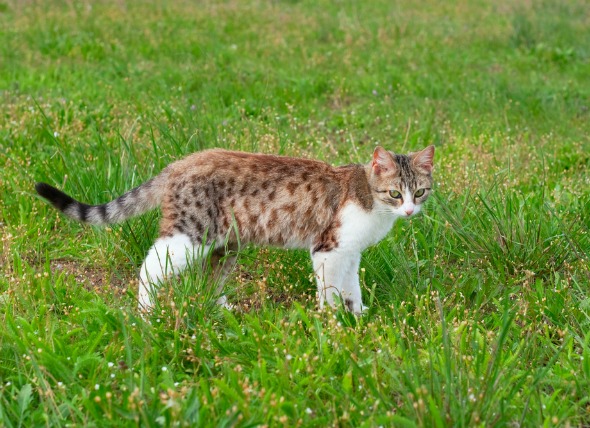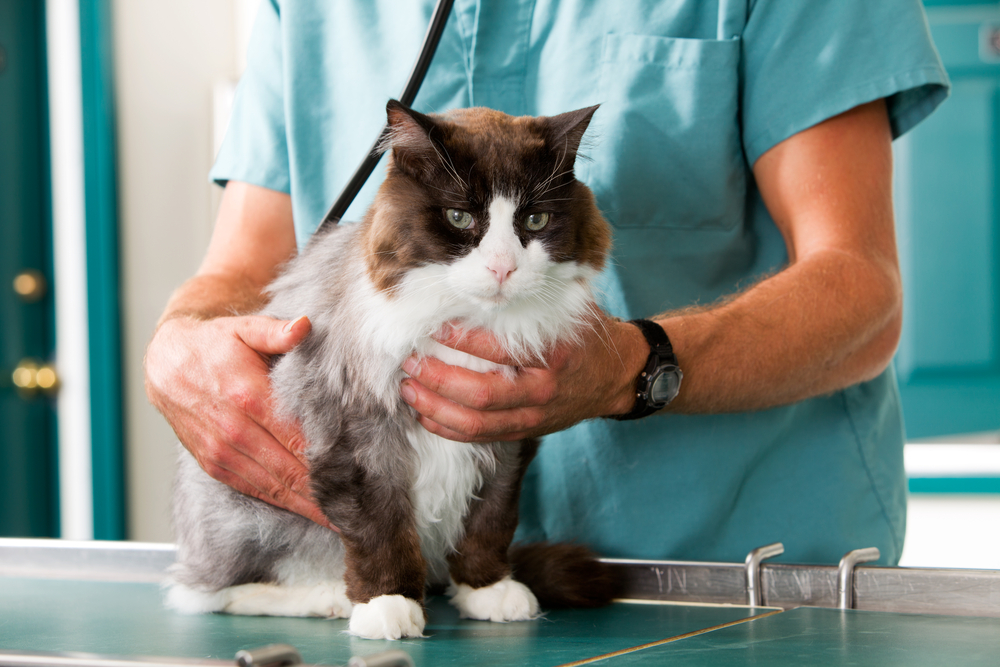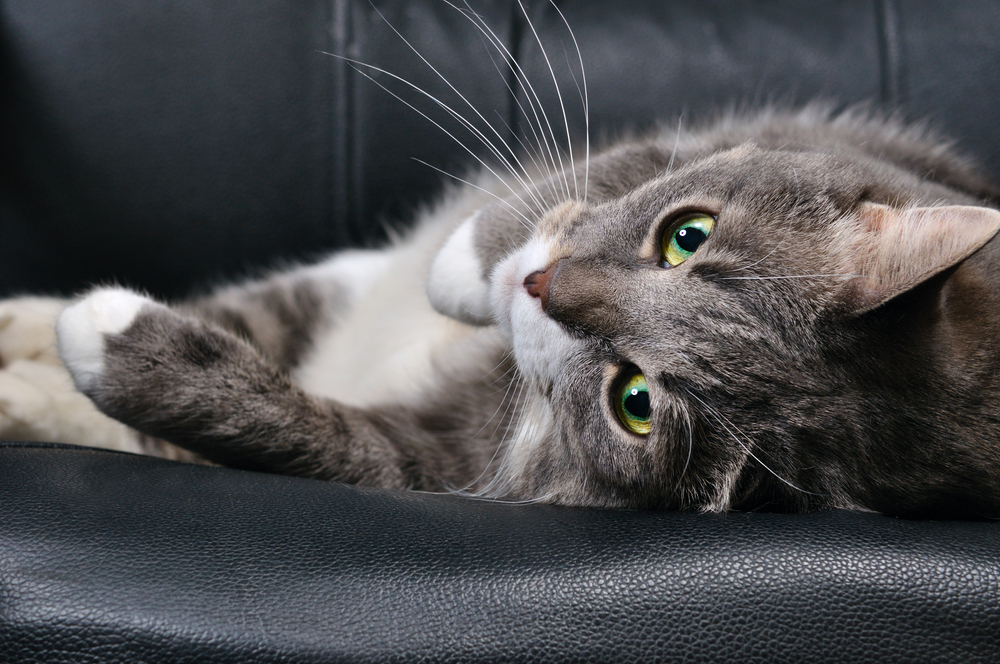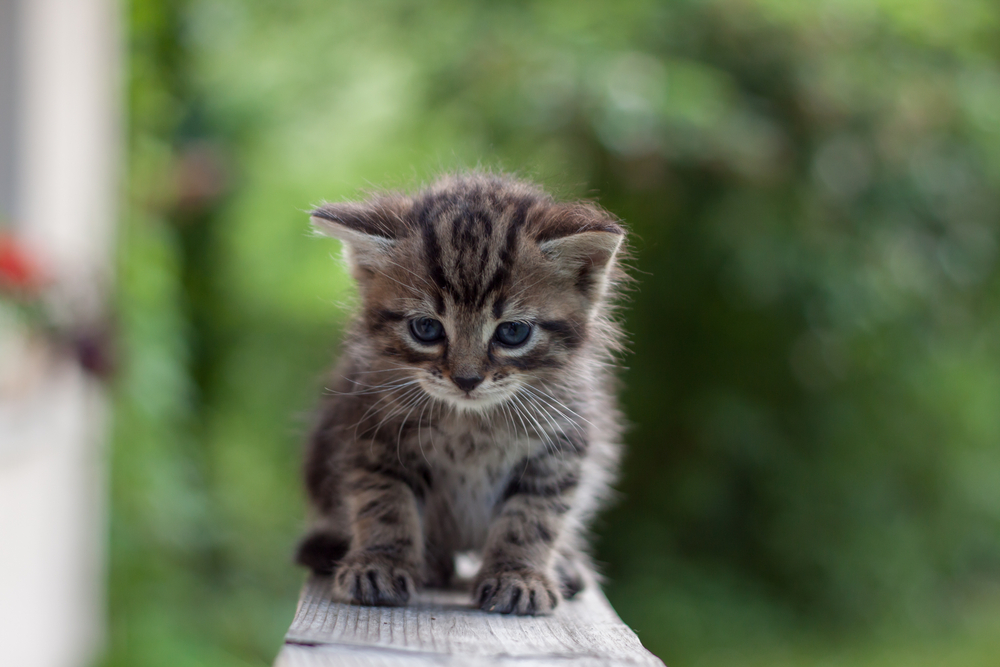
Tinea capitis is ringworm of the scalp. A visual diagnosis is extremely difficult for determining the apparent type of fungus. A skin scraping by your health care provider is preferred. Medications may include terbinafine hydrochloride, grisofulvin or Lamisil. Washing your hair with a medicated shampoo will also be recommended in most cases.
Microsporum canis accounts for about 74% to 98% of ringworm seen in cats. It is believed that up to 21% of cats are asymptomatic carriers. (cats which carry the ringworm fungus but show no signs of it) M. Canis is highly infectious. Ringworm can be spread from dog to cat, cat to cat, cat to dog, human to cat, cat to human, etc.
This fungus dwells in your cat's hair follicles. This weakens the shafts which causes hair to fall out. As the condition progresses, the hair loss will develop into circular patches usually on the head and limbs. Your cat may also have dry, flaky skin that's very itchy.
Tinea unguium is a nail fungus of the fingernail or toenail. Tinea corporis is the skin fungus of the limbs, face and trunk. Tinea versicolor is a skin fungus on the back, shoulders and chest caused by yeast malassezia furfur. Tinea barbae is related to the bearded area on the face and neck area. It is so important to know the ringworm location and appearance for the proper ringworm treatment.
Having ringworm is usually a bad experience for everyone. This disease is very irritating because it gives the one who is infected with it a constant itching sensation. Part of the skin that is affected by this disease has red ring-shaped rashes all over. The skin outside of the rash is crusty and flaky, while in the middle is composed of healthy skin. Ringworm treatments are very effective in removing all the symptoms of ringworm, including the itching and the rashes.
Ringworms are the result of a fungal infection and mainly appear on the scalp but also affect the nails and other skin sections on the rest of the body. The fungus is not only found in human beings but also dwells on the skin of animals such as dogs, cats and pigeons. It can also be found in the soil. Infection takes place when a person comes into contact with a fungus-infected person, animal or surface.
Ringworm is contagious. M canis is usually found in clusters around the infected cat hairs. The infected cat hairs will usually shed into the cats environment. A cat can become infected by contact with contaminated objects with ringworm as clippers, bedding, grooming tools and with other infected cats, dogs or animals. Ringworm is more common in young cats that are less than one year of age and long haired cats (Persians).
Bald spots on your dogs skin is frequently an warning of a ringworm infection. Ringworm causes the hair follicles in the infected area to harden and break off at the base. The bald spot created by the ringworm rash will probably appear as a red crusty ring. In the middle of the rash the skin will look natural. The irritation is also very itchy and your dog will likely scratch the spot if he can reach it. Try and keep your dog from scratching the infection if at all possible. Scratching will cause the rash to spread. If the animal is free to wander around the abode it can easily spread the rash to its owner through direct or indirect contact.
With cats, the common symptoms can be excessive hair loss in the area of the head or paws. Cats can also have scaly patches of skin on different parts of there body. With dogs, the common symptoms are lesions on many parts of the dogs skin including the tail, ear tips, paws and face. The best course of action regarding your ringworm pets or ringworm animals is to have your vet diagnose your situation for the correct remedy.
 Diarrhea (Antibiotic-Responsive) in Cats
Antibiotic-Responsive Diarrhea in Cats
It is not
Diarrhea (Antibiotic-Responsive) in Cats
Antibiotic-Responsive Diarrhea in Cats
It is not
 Foreign Objects Stuck in the Throat in Cats
Esophageal Obstruction in Cats
Cats often swallow
Foreign Objects Stuck in the Throat in Cats
Esophageal Obstruction in Cats
Cats often swallow
 Side Effects of Medications for Anxiety in Cats
Serotonin Syndrome in Cats
Anxiety disorders are
Side Effects of Medications for Anxiety in Cats
Serotonin Syndrome in Cats
Anxiety disorders are
 Hernia (Hiatal) in Cats
Hiatal Hernia in Cats
A hernia occurs when one pa
Hernia (Hiatal) in Cats
Hiatal Hernia in Cats
A hernia occurs when one pa
 Stud Tail in Cats
Supracaudal Gland Hyperplasia in Cats
Stud tail i
Stud Tail in Cats
Supracaudal Gland Hyperplasia in Cats
Stud tail i
Copyright © 2005-2016 Pet Information All Rights Reserved
Contact us: www162date@outlook.com